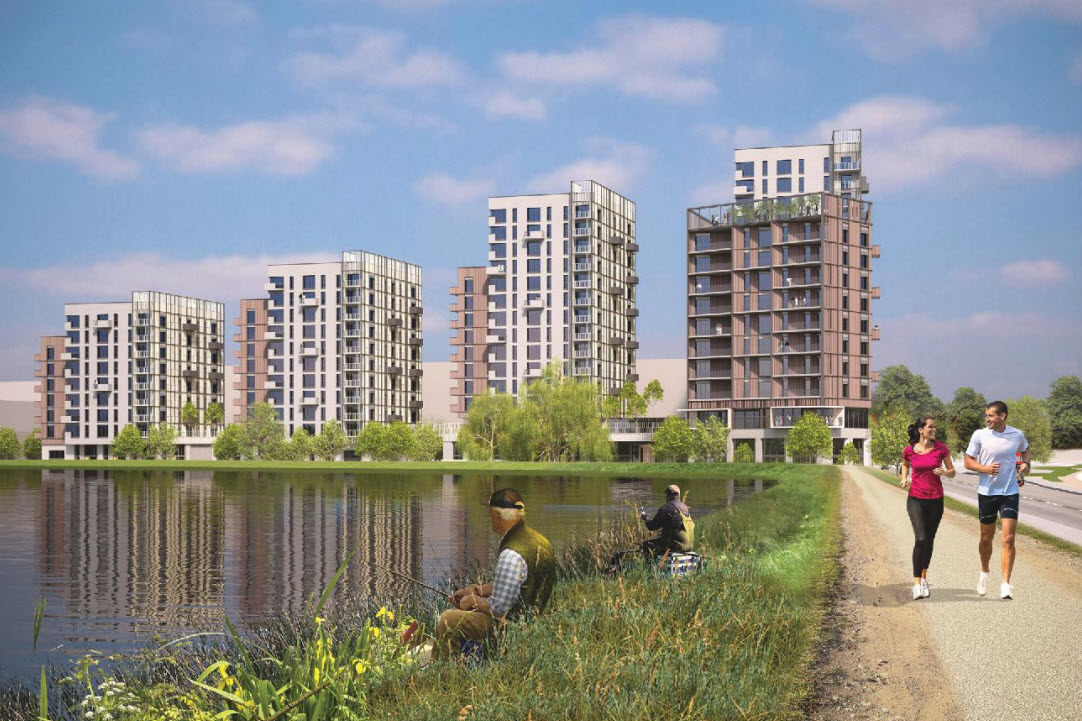As London mayor Sadiq Khan wrestles with how to deliver on his pledge to require 50% affordable housing on new developments, one London council may have found a solution.
When done correctly, estate regeneration schemes can drastically improve communities, providing more homes of better quality.
Take the regeneration of Grove Farm estate in Harrow, north-west London, for example.
The existing site provides 282 homes in a poorly designed and built scheme. Planning documents say the resiform structure built in the 1960s is well beyond its useful life, owing to its limited insulation, which does not conform to modern building regulations.
Harrow Council now plans to demolish the entire estate to make way for 549 new homes – nearly double the current density. Of the 549 new homes, 237 will be for social rent.
That is close to 50% of an entire scheme for social rent, which is unheard of in today’s market, so Harrow deserves plaudits for showing it is possible. Consultation documents reveal the vast majority of local residents support the plans, albeit the actual number of respondents seems low.
In short: double the amount of housing, better-quality homes and, crucially, the established community stays put.
Why this build-to-rent revolution is no false dawn
It is an exciting time in the private rented sector, especially regarding build-to-rent.
With ever-rising prices and home ownership out of reach for many, particularly in London, the PRS has become an increasingly attractive option.
However, the model favoured in places such as Germany, where renting on long tenancies is more normal, has never really taken off over here. There has long been talk about how the sector could take off, but not much action. Only more recently has it felt like it might actually be starting to happen.
EG’s London Residential Research often sees investors look at completed schemes, where they will acquire a block or two to rent out. However, this is not strictly build-to-rent, but stock that was meant for sale but never sold. It may be that a developer is looking for a quick return, rather than the slower process of selling individual units. More recently though, more schemes are coming through with PRS in mind from the outset (see box).
So why now? First, this is new, institutional money coming into the residential sector, often from pension funds looking for a long-term and stable return. With the imbalance between housing supply and demand across the capital, that means decent rental values. Added to this is the fact that the rate of return from government bonds – the traditional safe haven for institutional investment –has plummeted.
Another investment stream for institutions has traditionally been retail. However, as a sector it is not without its issues. Lease lengths are generally becoming shorter. With technological advances over the past decade, high streets have taken a hit and for occupiers it is hard to gauge future performance, so a shorter lease length is beneficial.
Just take a look at the recent prelet by Amazon at Roxhill and Port of Tilbury’s London Distribution Park in Essex to see where the industry is going. A game-changer for logistics – and the battle between the high street and e-tail – the high-tech mega-shed will be four storeys high and total 2.2m sq ft.
What these trends boil down to is a need for institutions to diversify their income streams, which it seems will be to the benefit of the build-to-rent sector.
London’s standout build-to-rent pipeline
- Greenford Green, a former GSK site in Greenford – Greystar, 2,200 homes
- Westfield Stratford – Westfield, 1,224 homes
- Westfield Shepherd’s Bush – Westfield, 1,347 homes
- Walthamstow – Legal & General, 388 homes (below)

Why build-to-rent could be recession proof
Proper placemaking When developers are building a PRS community, they are investing in it long term. That means not skimping on public realm, and creating a place people want to call home for decades after completion.
More homes, more quickly Developers’ current model of drip-feeding the market does not apply to build-to-rent. Rental homes start paying for themselves when they are occupied, which means building the entire scheme quickly.











